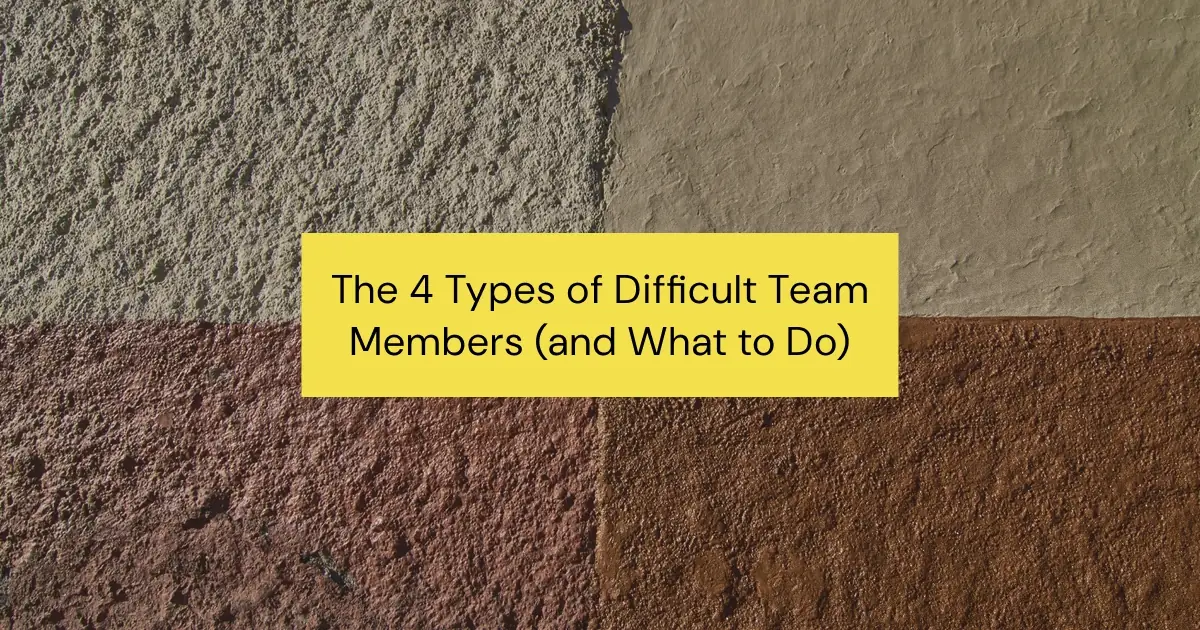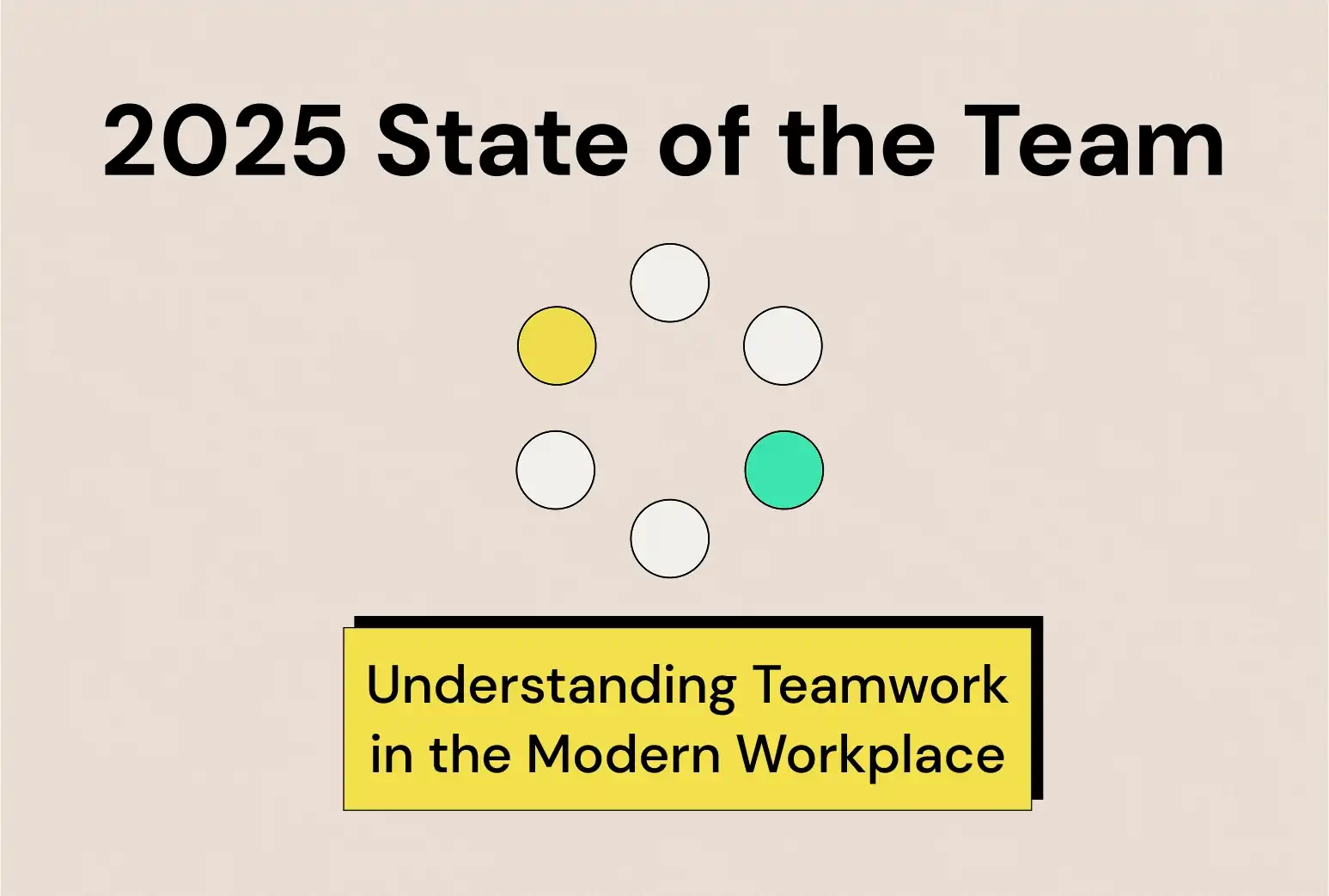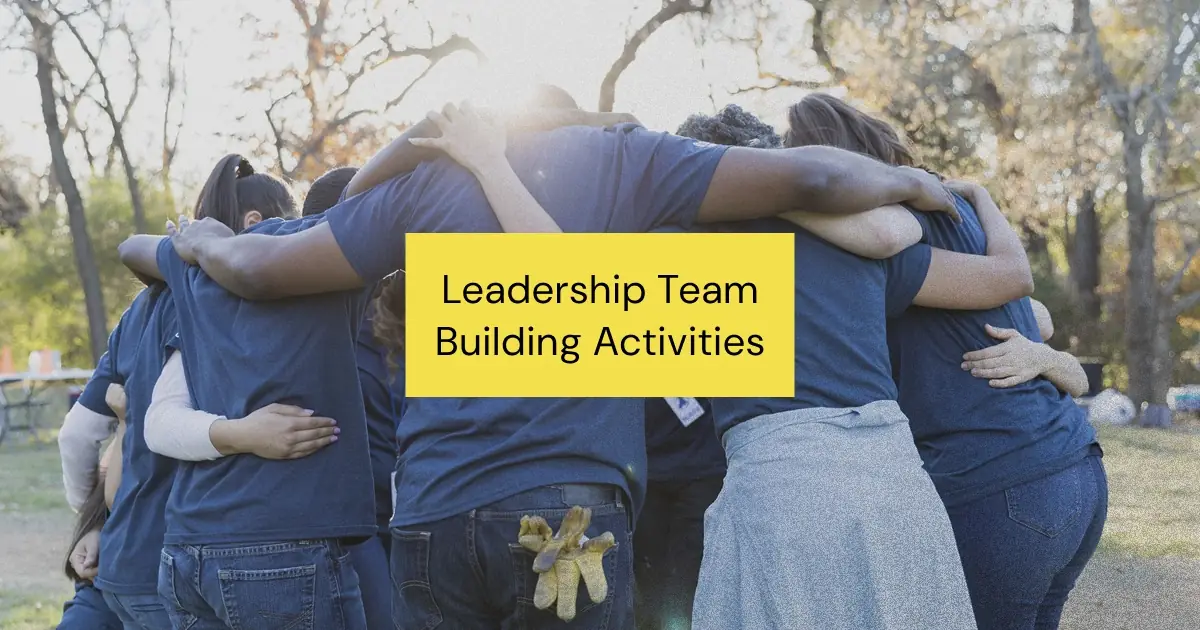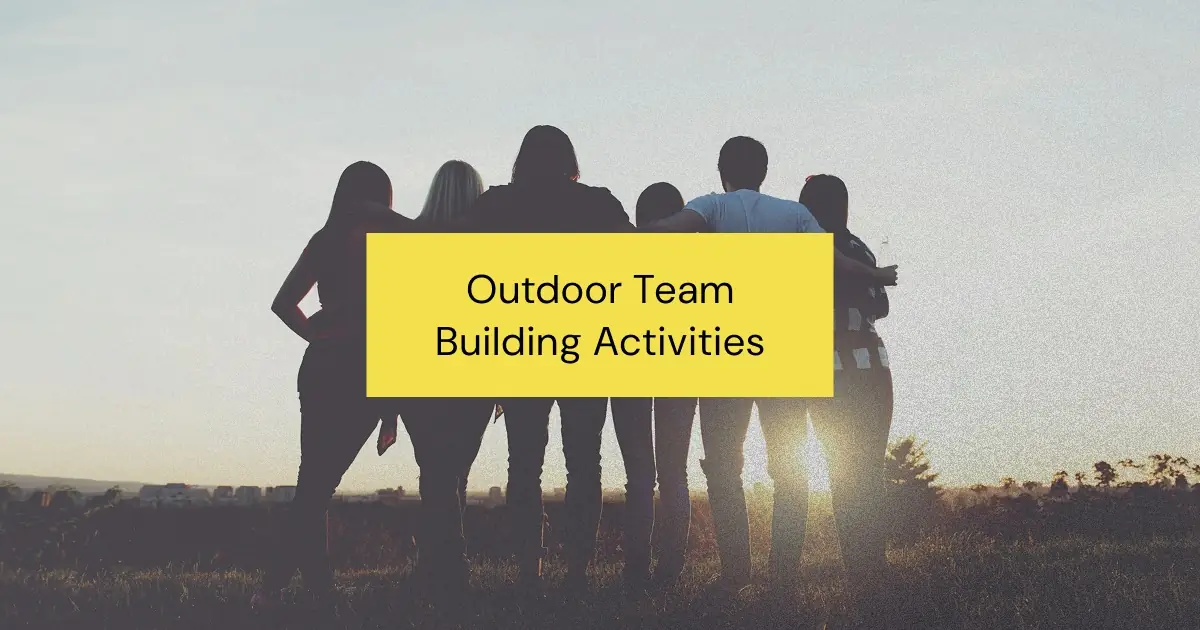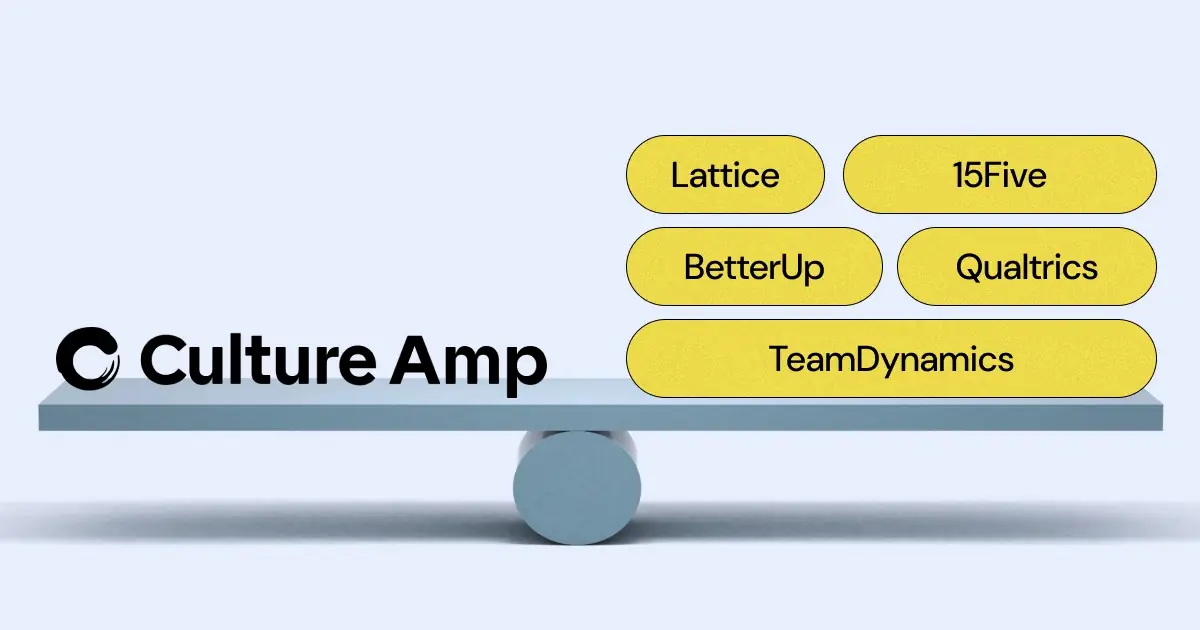Every manager has dealt with a difficult team member. Maybe it’s the person who steamrolls meetings with their opinions. Or the one who quietly disagrees but never speaks up. Difficult behaviors slow teams down, cause friction, and make work frustrating.
Most advice on handling difficult employees focuses on fixing the person. That approach rarely works. You’re not going to change someone’s personality. Instead, you need to focus on how your team works together. Sometimes, what looks like one person’s bad habit is actually a team-wide dysfunction.
That’s where TeamDynamics comes in. Instead of looking at isolated personalities, it analyzes how the team as a whole functions. By understanding the patterns shaping your team, you can turn difficult personalities into productive contributors.
The 4 Types of Difficult Team Members (And How to Manage Them)
Let’s break down four common types of disruptive team members and what to do about them. Instead of chasing after individual quirks, we’ll focus on fixing team dynamics so issues disappear at the source.
1. The Resistant-to-Change vs. The Impulsive Decision-Maker
Some team members fight change at every turn. They prefer the "tried and true" and resist new tools, processes, or ways of thinking. This slows innovation and frustrates colleagues who want to move forward.
Then there's the opposite type—the Impulsive Decision-Maker. They're always chasing the next big idea, often pushing the team into sudden shifts without thinking through the consequences. This can lead to confusion, wasted effort, and costly mistakes.
Picture this: Your team is about to implement a new project management system. One teammate refuses to adapt, insisting that the current method "works just fine." Meanwhile, another jumps between three different tools, forcing the team to constantly adjust. The result? Chaos.
How to Handle Them
For the Resistant-to-Change team member: Make change feel less risky. Instead of pushing a massive shift all at once, introduce updates gradually. Show clear examples of how new methods improve efficiency. If they feel included in the decision-making process, they're more likely to buy in.
For the Impulsive Decision-Maker: Slow them down before they pull the team off track. Require a simple but structured approval process—maybe a quick pros-and-cons list or a team discussion before any major shift. This ensures good ideas don’t get derailed, but also prevents reckless moves.
The best teams balance stability and agility. Some changes need careful planning; others require quick action. If your team leans too far in one direction, it's your job to pull them back to the middle.
2. The Over-Communicator vs. The Silent Contributor
Some employees never stop talking. Others barely say a word. Both create friction.
The Over-Communicator floods the team with messages, emails, and meeting chatter. They repeat points, over-explain, and derail discussions with unnecessary details. Their enthusiasm is great—but it clutters conversations and makes it hard for the team to focus.
{{inline-cta}}
The Silent Contributor is the opposite. They keep ideas and updates to themselves, assuming others already know what they’re working on. They rarely volunteer input and may not speak unless directly asked. Their silence slows collaboration, leading to misalignment and missed insights.
A productive team needs clear and efficient communication. Too much noise creates confusion. Too little creates gaps in information.
How to Handle Them
The issue isn’t just the individual—it’s how the team communicates. According to TeamDynamics, teams fall into two categories:
- Ordered teams have defined processes for sharing information. Meetings have clear agendas, and updates follow a structured format.
- Informal teams share information organically. Conversations flow naturally, and updates happen as needed rather than on a set schedule.
If your team leans too far in one direction, you’ll see Over-Communicators or Silent Contributors emerge. Here’s how to fix it:
For the Over-Communicator:
- Set communication norms. Define when and how updates should be shared. Use structured reports or stand-up meetings to streamline information flow.
- Encourage brevity. Challenge them to keep messages short and to the point. A rule like “one update, one takeaway” can help.
- Redirect excess communication. If they have lots to say, give them an outlet—like a written report or a designated time for deep dives.
For the Silent Contributor:
- Create space for their input. In meetings, go around the room to ensure they speak. In Slack or email, directly ask for their thoughts.
- Normalize sharing work in progress. Some stay silent because they fear their ideas aren’t polished. Encourage rough drafts and open-ended discussions.
- Make updates a habit. A simple expectation—like a weekly written update—helps ensure they contribute regularly.
The best teams balance sharing enough information without overwhelming each other. Create a structure that keeps communication efficient and effective.
3. The Authority Challenger vs. The Passive Follower
Some employees push back on leadership at every turn. Others go along with everything without contributing their own ideas. Both create problems.
The Authority Challenger questions every decision. They argue in meetings, resist direction, and undermine leadership. While some level of skepticism is healthy, constant defiance slows progress and frustrates everyone.
The Passive Follower is the opposite. They rarely speak up, avoid making decisions, and wait for someone else to take ownership. This puts extra pressure on proactive colleagues and leads to missed opportunities.
A high-performing team needs both confidence and alignment. Too much resistance creates tension. Too much passivity leads to a lack of accountability.
How to Handle Them
The problem isn’t just the individuals—it’s how the team makes decisions. According to TeamDynamics, teams fall into two categories for decision-making:
- Concordant teams operate by consensus. Everyone has a say, and decisions are shaped through discussion.
- Authoritative teams rely on leadership to make the final call after gathering input.
If your team leans too far in one direction, you’ll see Authority Challengers or Passive Followers emerge. Here’s how to fix it:
For the Authority Challenger:
- Clarify decision-making roles. Make it clear when decisions are open for discussion—and when leaders call the shots.
- Create structured ways for them to contribute. Instead of letting them debate everything, set dedicated times for constructive feedback. (Example: A monthly “challenge” meeting where the team pokes holes in big decisions.)
- Hold them accountable. If they reject every idea, push them to propose alternatives. "If this won’t work, what’s your better option?"
For the Passive Follower:
- Set expectations for participation. At meetings, don’t let them sit back. Assign them specific topics to weigh in on.
- Encourage leadership moments. Give them ownership over small decisions. Over time, they’ll gain confidence to take initiative.
- Coach them through disagreements. Some employees avoid conflict because they fear consequences. Teach them that respectful disagreement helps the team make better choices.
The best teams strike a balance. Strong leadership is critical, but so is active input from every team member. Make sure decision-making dynamics encourage both.
4. The Cliquish Collaborator vs. The Lone Wolf
Difficult team members don’t just disrupt meetings. They shape the way a team functions—sometimes for the worse. Two of the most damaging types? The Cliquish Collaborator and the Lone Wolf.
The Cliquish Collaborator: Builds strong relationships—but only with certain people. They share critical info in private chats, form unofficial alliances, and make others feel excluded. Over time, this breeds resentment, slows decisions, and creates an “us vs. them” dynamic.
The Lone Wolf: Prefers to work in isolation, rarely seeking input or sharing progress. This might seem efficient—until a deadline hits and the team realizes half the project doesn’t align with what others are doing. The result? Extra work, confusion, and frustration.
Left unchecked, these behaviors weaken trust. The team either becomes a collection of cliques or a group of silos—neither of which leads to great results.
How to Handle Them
- Make Information Sharing a Team Habit. Cliquish behavior thrives when team members rely on informal networks to get information. Instead, set clear team-wide practices for communication. Use shared docs, central Slack channels, and structured updates so no single group controls access to key details.
- Encourage Cross-Team Collaboration. Pair up employees who don’t naturally work together. Rotate meeting leads. Set project teams that mix different work styles. This isn’t about forced socializing—it’s about making sure collaboration happens with everyone, not just familiar faces.
- Reward Transparency, Not Just Outcomes
Lone Wolves often think, “If I get my work done, does it really matter how I do it?” Yes, it does. Recognize and reward behaviors that bring the team into the process, not just the final product. Encourage updates and shared progress checkpoints to keep people aligned.
The TeamDynamics Approach
Cliquish behavior and isolation stem from how teams process information. TeamDynamics identifies whether a team has a Relational or Logical processing style:
- Relational teams rely on trust and relationships when evaluating information. If unchecked, this can lead to favoritism and exclusion.
- Logical teams focus only on the facts, but sometimes at the expense of collaboration. This can make them siloed and disconnected.
A well-balanced team knows when to prioritize relationships and when to step back and look at the bigger picture. If your team struggles with cliques or isolation, it’s time to assess how it makes decisions.
Want to see how your team operates? Take the TeamDynamics personality test today and learn how to build a more connected, effective team.
Why Traditional Personality Tests Miss the Bigger Picture
Most personality tests focus on individuals. They tell you if someone is introverted, extroverted, creative, or logical. But they miss something essential: how the team operates as a unit.
Here’s the problem: A team isn’t just a collection of individual personalities. It’s a system. Team success depends on how members communicate, make decisions, and execute work together—not just their personal tendencies.
Take MBTI, for instance. It might tell you that Sarah is an introvert and Jack is a thinker. But it won’t say whether your team struggles with decision-making or fails to communicate efficiently. That’s where TeamDynamics comes in.
What TeamDynamics Does Differently
Instead of focusing on who you are as an individual, TeamDynamics focuses on how your team functions:
- Are your meetings chaotic or structured? (Ordered vs. Informal communication)
- Do decisions take forever or get made too fast? (Concordant vs. Authoritative decision-making)
- Does your team plan every detail or make things up as they go? (Deliberate vs. Spontaneous execution)
Understanding these behaviors makes you a better manager because it helps you fix problems at their root. Instead of blaming individuals, you’ll see how the system creates friction—and how to fix it.
Team Problems Are Bigger Than Personality Conflicts
Think about the last time your team was stuck. Maybe:
- Too many voices in a meeting led to decision paralysis.
- A top-down decision made without input caused resentment.
- Confusing goals resulted in missed deadlines.
These aren’t personality issues—they're team dynamic problems. And if you only focus on personality, you’ll solve nothing.
Traditional personality tests are fun, but they don’t help you build a high-performing team. If you want to manage effectively, focus on how your team works together—not just who they are as individuals.
That’s why TeamDynamics is a smarter tool for managers. It helps you see how your team truly operates, so you can fix what’s slowing them down
Conclusion: A Smarter Way to Manage Difficult Team Members
Managing difficult team members isn’t about changing personalities—it’s about fixing how the team works together. Most managers waste time trying to “coach” difficult people into acting differently. That rarely works. Instead, the real solution is to optimize team dynamics so that friction naturally decreases.
Think about it: A team with clear decision-making rules won’t get stuck arguing with an Authority Challenger. A team with strong communication norms won’t suffer from an Over-Communicator taking over every meeting. When the team structure is right, individual behaviors become less of a problem.
This is exactly what TeamDynamics helps you do. By understanding how your team shares information, makes decisions, and executes tasks, you can stop reacting to problems and start preventing them.
If you’re dealing with difficult team members right now, don’t just address their behavior—fix the team environment that makes those behaviors disruptive in the first place. Take the TeamDynamics personality test today and get the insights you need to build a stronger, more effective team.


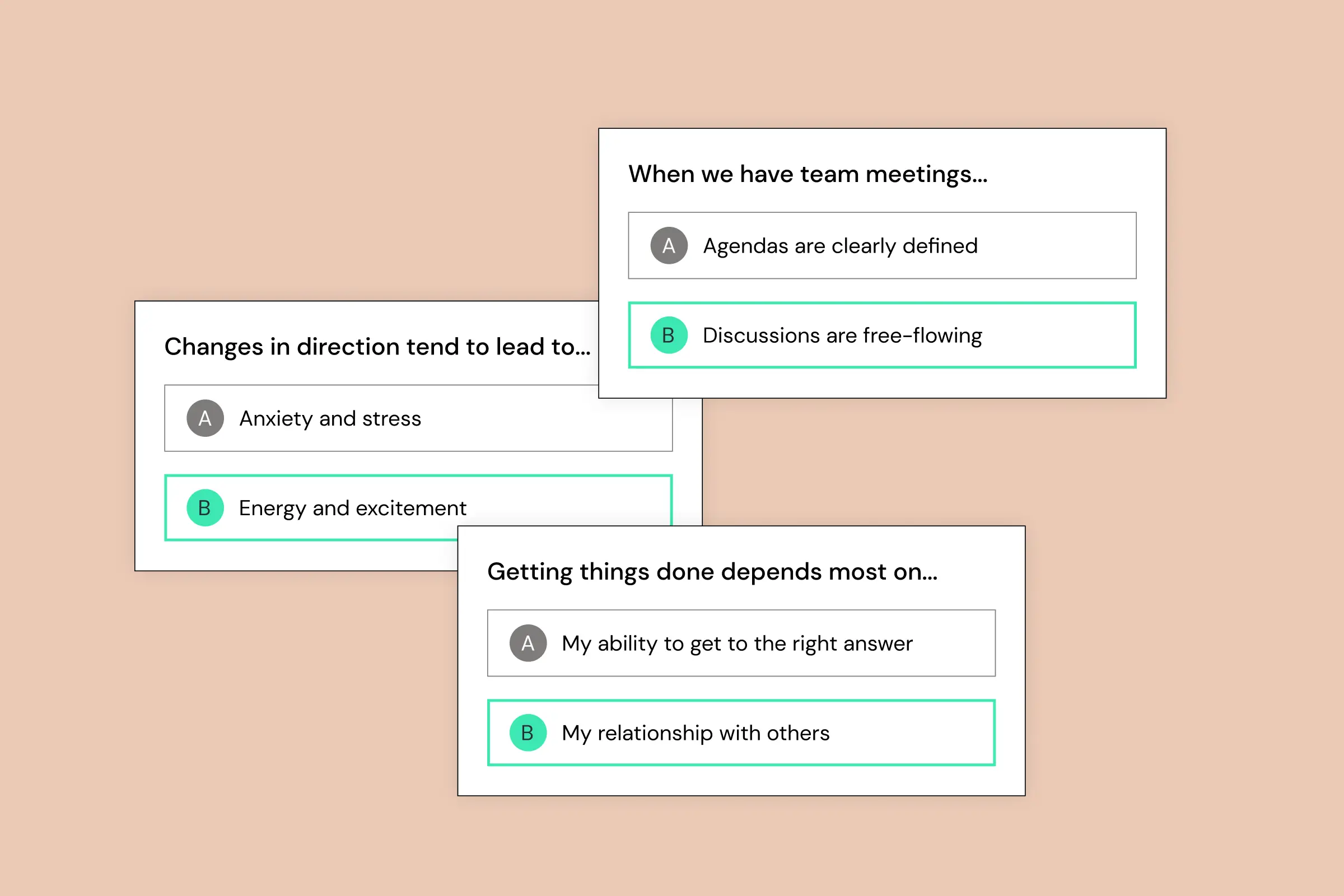

.png)
